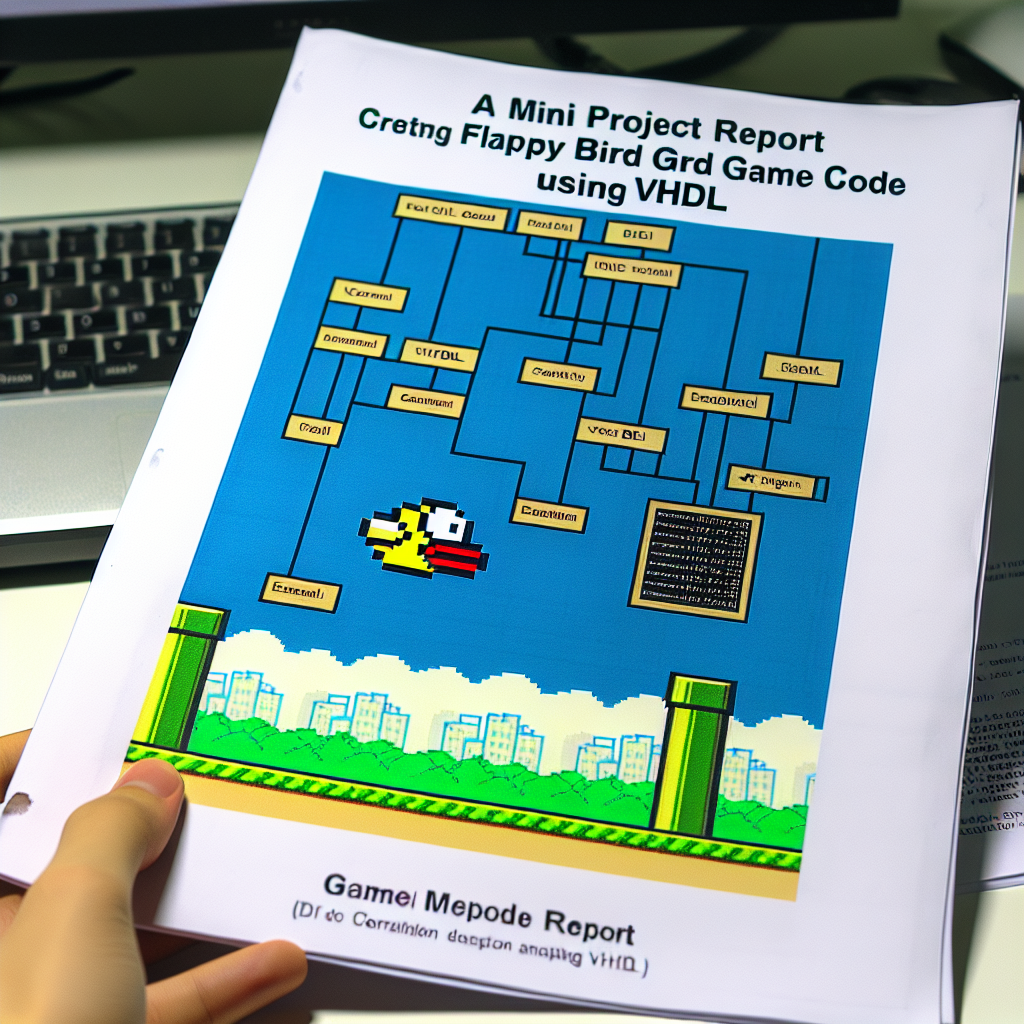Report on VHDL mini project for a Flappy Bird game code.
Introduction
One of the most popular video games of all time is Flappy Bird, a simple yet addicting game where players navigate a bird through a series of obstacles by tapping on the screen to make the bird flap its wings. As a student pursuing a Bachelor of Technology degree in India, I decided to take on the challenge of creating a VHDL mini project to replicate the Flappy Bird game. This project will not only test my programming skills but also enhance my understanding of digital design and hardware description languages.
Problem Statement
The goal of this project is to create a VHDL code that can simulate the Flappy Bird game on an FPGA board. The main challenge lies in accurately recreating the gameplay mechanics and graphics of the original game while utilizing the constraints of hardware description languages. Additionally, the code must be efficient and optimized to run smoothly on the FPGA board without any lag or errors.
Existing System
Currently, there are various Flappy Bird game clones available on mobile devices and online platforms. However, these versions are developed using high-level programming languages like Java or C++, making them incompatible with FPGA boards. This limitation restricts the ability to directly implement the game on hardware systems, which is necessary for academic and research purposes.
Disadvantages
Using high-level programming languages for developing the Flappy Bird game poses several disadvantages when it comes to implementing the game on hardware systems:
- Lack of direct compatibility with FPGA boards
- Difficulty in optimizing the code for hardware constraints
- Limited understanding of digital design principles
Proposed System
In contrast to the existing system, the proposed system will involve developing the Flappy Bird game using VHDL, a hardware description language commonly used in digital design and FPGA programming. By creating the game in VHDL, we can directly implement the code on FPGA boards, allowing for real-time simulation and analysis.
Furthermore, by optimizing the code specifically for hardware systems, we can achieve better performance and efficiency compared to the existing game clones. This project will also provide me with hands-on experience in digital design and FPGA programming, which are essential skills for aspiring engineers in the field of technology.
Conclusion
In conclusion, the VHDL mini project on the Flappy Bird game code presents an exciting opportunity for me to merge my passion for gaming with my academic pursuits in engineering. By creating a hardware-based implementation of the game, I aim to gain valuable insights into digital design principles and FPGA programming while showcasing my programming skills and creativity.
Through this project, I hope to demonstrate the potential of VHDL in developing interactive and engaging applications for FPGA boards, paving the way for future innovation and research in the field of technology.

